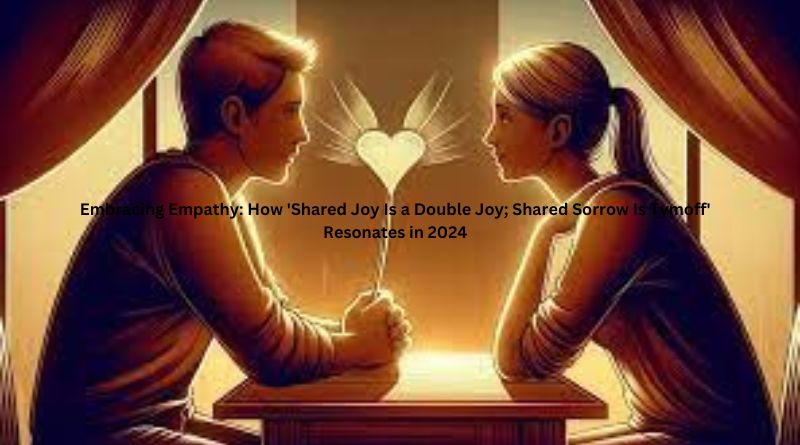Introduction
In an era marked by rapid technological advancements and a global pandemic that reshaped our social interactions, the adage “shared joy is a double joy; shared sorrow is Tymoff” has never been more pertinent. As we navigate the complexities of 2024, the importance of empathy and shared experiences in fostering community resilience and individual well-being comes to the forefront. This article delves into the multifaceted ways in which sharing our joys and sorrows not only enhances our emotional connections but also strengthens our collective capacity to overcome challenges.
The Science of Sharing Emotions
Understanding Empathy
Empathy, the ability to understand and share the feelings of another, lies at the heart of our social connections. Neuroscientific research has shown that empathetic experiences activate specific brain regions associated with emotional processing, highlighting the intrinsic human capacity to connect with others’ emotional states. This section explores the psychological and physiological mechanisms underlying empathy, illustrating how shared experiences can amplify joy and mitigate sorrow.
The Benefits of Shared Joy
Joy, when shared, becomes magnified, creating a ripple effect that enhances the well-being of individuals and communities. Psychological studies have documented the positive impacts of shared joy on mental health, including increased feelings of belonging, improved mood, and a greater sense of life satisfaction. By examining recent examples and research findings, this section uncovers how shared moments of happiness contribute to social cohesion and personal growth.
Navigating Shared Sorrow in Modern Times
The Role of Digital Communities
The advent of digital technology has transformed the ways in which we share our sorrows. Social media platforms, online forums, and virtual support groups offer new avenues for expressing grief and finding solace in communal experiences. This section evaluates the pros and cons of digital empathy, addressing the challenges of forming genuine emotional connections online while also acknowledging the unprecedented access to support and understanding that these platforms provide.
The Healing Power of Collective Grief
History is replete with instances where collective mourning has led to profound societal healing and change. From public memorials to movements born out of shared tragedy, the act of communal grieving can serve as a powerful catalyst for solidarity and transformation. This part of the article explores contemporary examples of shared sorrow leading to collective action and healing, emphasizing the importance of communal spaces in the grieving process.
Empathy in Action: Stories from 2024
Case Studies of Shared Joy and Sorrow
Real-life stories resonate deeply, providing tangible examples of the concepts discussed. This section features narratives from individuals and communities in 2024 who have experienced the amplification of joy and the mitigation of sorrow through shared experiences. Through interviews and case studies, readers will gain insights into the practical application of empathy in various contexts, from personal triumphs and celebrations to coping with loss and adversity.
Fostering Empathy in a Divided World
Challenges and Opportunities
Despite its benefits, cultivating empathy in today’s polarized society presents significant challenges. This section addresses the obstacles to empathy, such as echo chambers, prejudice, and empathy fatigue, while also offering strategies for overcoming these barriers. By highlighting initiatives aimed at promoting understanding and compassion across divides, this part of the article provides a hopeful outlook on the potential for empathy to bridge differences and heal wounds.
The Role of Education and Policy
Empathy can be nurtured through intentional educational programs and policies that promote emotional intelligence and social awareness. This section discusses the role of schools, workplaces, and governments in fostering empathetic cultures, outlining successful programs and policies from around the globe. By advocating for systemic changes that prioritize empathy, this part of the article underscores the importance of collective efforts in shaping a more compassionate society.
Conclusion
As we reflect on the significance of “shared joy is a double joy; shared sorrow is Tymoff” in 2024, it becomes clear that empathy is not just a personal virtue but a societal necessity. In a world facing unprecedented challenges, the ability to share in each other’s joys and sorrows offers a path toward resilience, unity, and hope. By embracing empathy, we can transcend our differences and build a more understanding and compassionate world for future generations.
Read also: check

